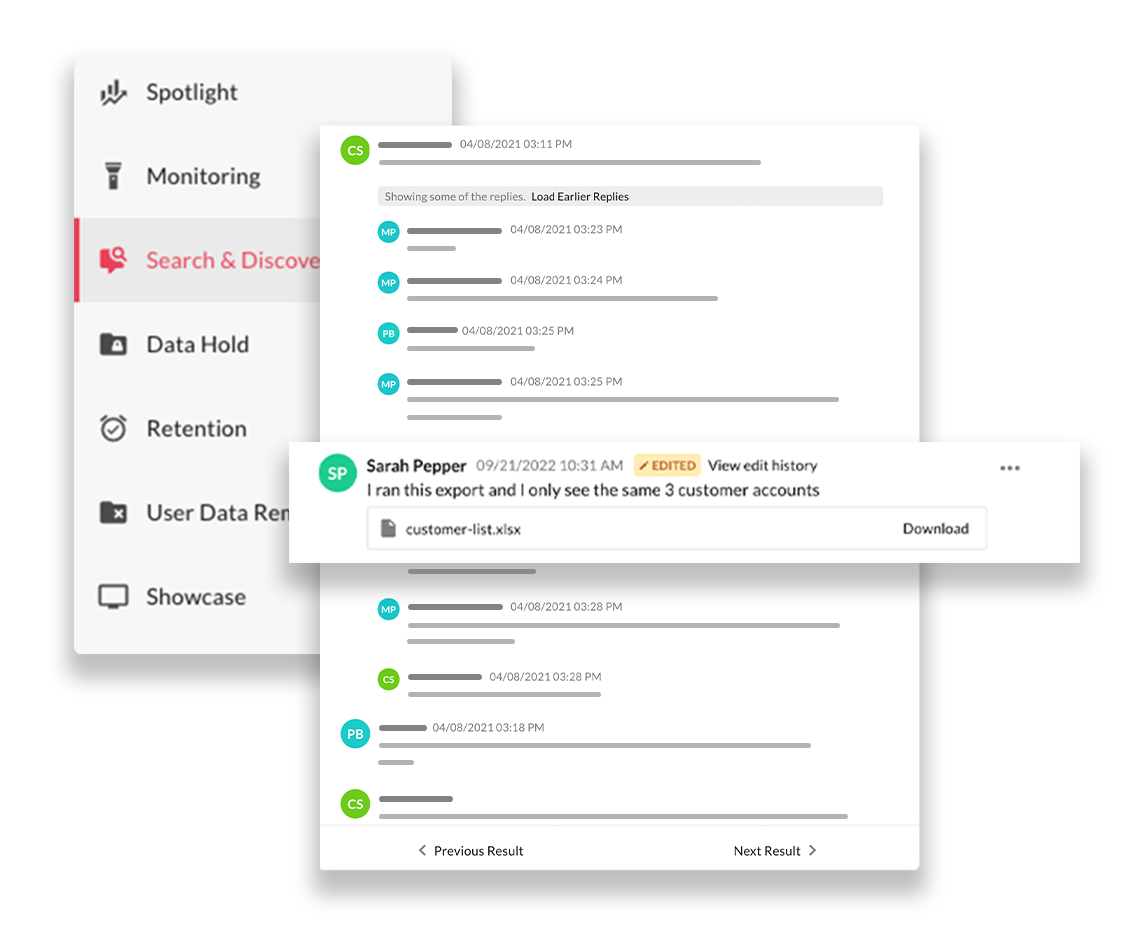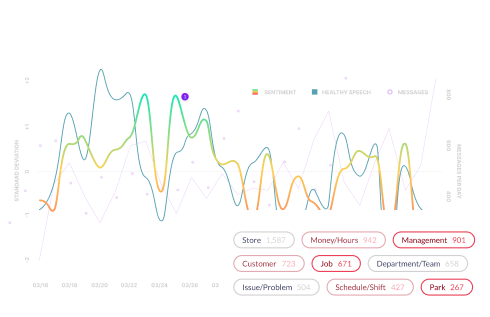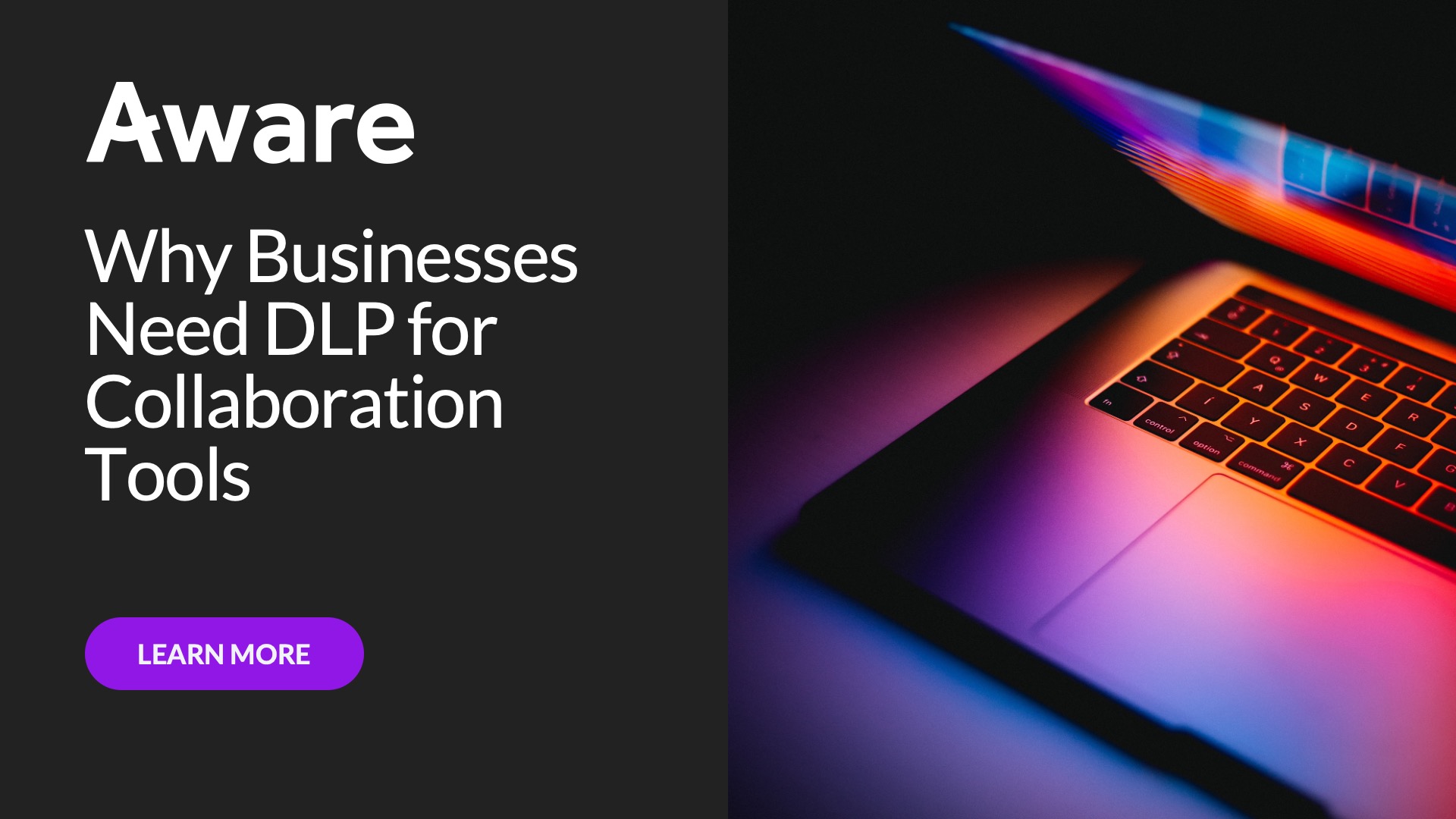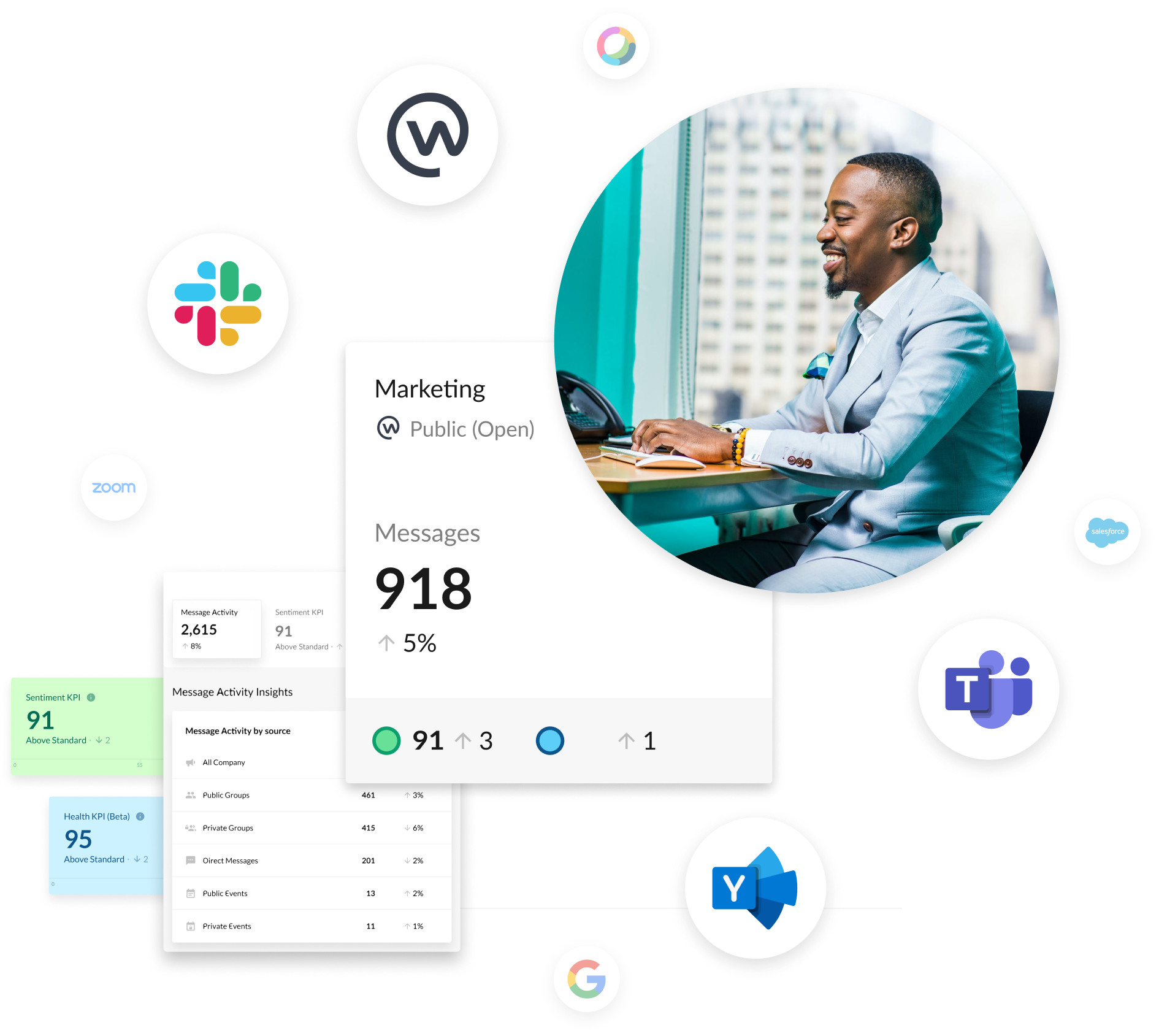DLP for Collaboration Data: Everything You Need to Know
by Aware
Data loss prevention encompasses the tools and processes that protect sensitive, restricted, or regulated company data. DLP software supports these processes by analyzing data-in-place to identify policy violations and block data from being accessed or transferred. However, the widespread use of digital collaboration tools in the modern workplace has opened new avenues through which data can be improperly accessed or exfiltrated. This post explores the current state of DLP in collaboration and the steps required to close the gap and protect your most vulnerable and valuable data.

Protect your organization with collaboration DLP from Aware
Contents
- How do legacy DLP tools work?
- What are collaboration tools?
- The current state of collaboration DLP
- The risks of ignoring collaboration data sets
- The risks of using legacy DLPs for collaboration
- The risks of manually searching collaboration data
- DLP for collaboration data from Aware
How do legacy DLP tools work?
DLPs are pattern matching software that use regular expressions (regex) and keywords to match the data they ingest against preset policies. When a policy is triggered, the DLP can take actions such as notifying an admin, blocking the violating content, or preserving a record of the event.
Many DLPs are passive solutions that monitor data as it flows between devices on company systems, networks, cloud applications, and endpoints. However, these systems were built for communication channels and technologies that had clearly defined structures. They weren’t built to handle the complexities of modern collaboration tools.
What are collaboration tools?
Research shows that 85% of companies use at least six collaboration tools in the workplace. That might seem like a lot, but collaboration isn’t limited to messaging apps like Slack and Microsoft Teams. Almost every new technology comes with a way for employees to exchange messages, brainstorm, and work collaboratively—and that means creating and exchanging data. Jira, Confluence, Google Drive, Basecamp, Airtable and more all offer employees new ways to share information.
These tools drive productivity, employee satisfaction, and retention. They are often a fundamental part of the company’s culture, especially for remote and distributed workforces. Enterprise social networks like Workplace from Meta and chat apps like Slack have replaced the office water cooler as the place where employees go to get updates and socialize. However, the data they contain can create new risks and liabilities for the enterprise if not properly managed and controlled.
The current state of collaboration DLP
Many organizations simply aren’t managing collaboration data or are relying on legacy tools and CASBs to protect data at traditional endpoints. Unlike email, cloud repositories, and more traditional network traffic, collaboration data is unstructured, uncontrolled, and growing at an unprecedented rate. Aware research shows that just 1,000 employees will send over 5 million collaboration messages each year.

What's in your data? Find out now.
These messages are unlike almost any other kind of business communications. While email and file transfers are typically one-to-one or transactional in nature, collaboration messages from Teams and Slack are conversational, fragmented, and do not flow evenly between parties. They may involve posts, replies, threads, conversations started in public that continue in DMs, and are further complicated by edits, deletions, videos, screenshots, and more.
What’s more, collaboration tools were built to circumvent traditional controls that often slow down the speed of communication. This produces a better end user experience, but at the cost of data security and protection. That leaves most businesses with three options: Ignoring collaboration data management entirely, using legacy DLPs, or relying on manual searches to find information.

Read More: Why businesses need DLP for collaboration tools
The risks of ignoring collaboration data sets
Failing to apply any kind of DLP controls to collaboration data leaves businesses at an obvious risk of breach and loss, which often brings with it the risk of fines, penalties, and reputational harm.
Given Aware research shows that 1 in 17 messages contains three or more pieces of sensitive data, and the average penalty for each breached record is $164, the cost of data loss from collaboration tools can quickly add up.
The risks of using legacy DLPs for collaboration
Traditional DLPs were designed to protect data loss from email, document repositories, and endpoints. They aren’t built to handle the messiness that comes with collaboration tools. These tools contain tangled webs of public and private channels and direct messages, threaded content, reactions, emojis, gifs, file attachments and more. They instantly sync data across countless devices both inside and outside company firewalls and CASBs, and users retain the ability to bidirectionally edit or delete their messages at will.
Simply, legacy tools cannot effectively manage DLP in this environment, leading to lost data, missing context, and—worst of all—an illusion of security that can mislead infosec officers into thinking their data is protected when it’s actively at risk.
Related: 5 Reason Why You Need DLP for Slack
The risks of manually searching collaboration data
Whether you’re relying on manual searches for incident response or to fill the gaps when legacy DLPs miss vital context, security event investigations are taking longer as a result, extending time-to-context and time-to-containment. This increases legal and audit exposure, bakes inefficiencies into your processes, and increases the risk that evidentiary data will be lost or destroyed.
Given many collaboration tools restrict message visibility in private channels and direct messages, manually searching all the data contained within that tool may not even be possible.
DLP for collaboration data from Aware
Aware was purpose-built to provide data loss prevention controls for collaboration data sets. Backed by the industry’s most accurate natural language processing (NLP), designed and trained exclusively on short-form collaboration messages, the Aware platform understands and normalizes the messiness and nuance of unstructured collaboration data.
With Aware DLP for collaboration, organizations can:
- Surface even more policy violations—and reduce false positive results
- Protect regulated and sensitive data from unauthorized access or loss
- Capture a complete record of all messages, including edits and deletions
Aware provides cross-platform DLP support for all major chat solutions, including Slack, Microsoft Teams, Zoom, Webex and more. By connecting natively through APIs and webhooks, Aware centralizes and normalizes data from multiple collaboration tools into a single platform without impacting end user experience. This solution reduces complexity for security teams and improves efficiency in time-sensitive investigations.
Using Aware, organizations can automatically detect:
- Regulated data such as PII/PHI/PCI-DSS
- Intellectual property and company-specific information
- Passwords, screenshots, and credit cards
- Toxicity, hate speech, and harassment
- NSFW images
Modern infosec approaches require protection capabilities that understand the data they are managing. Aware was designed to augment legacy DLP solutions with comprehensive, real-time ingestion and analysis of collaboration data that delivers real-time alerts and remediation. Aware’s customizable controls enable granular data management that surfaces potential violations of legal, regulatory, internal, and external acceptable use policies, and delivers results complete with surrounding context to quickly and easily understand the who, what, where, when, how, and why of investigations.









